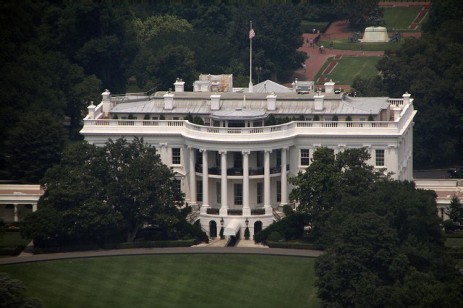 Font of agronomical wisdom?Photo: Imagined RealityAs I reported last week, the USDA announced late Thursday it would allow the planting of genetically modified alfalfa, the nation’s fourth-largest crop, without restriction.
Font of agronomical wisdom?Photo: Imagined RealityAs I reported last week, the USDA announced late Thursday it would allow the planting of genetically modified alfalfa, the nation’s fourth-largest crop, without restriction.
Was the decision based on a careful weighing of the evidence by the USDA — or on political consideration emanating from the White House?
Two recent media reports strongly suggest the latter. In The Wall Street Journal, Bill Tomson and Scott Kilman — two well-connected, veteran ag-policy reporters — directly tied the decision to the White House. Kilman and Tomson wrote:
The Obama administration Thursday abandoned a proposal to restrict planting of genetically engineered alfalfa, the latest rule-making proposal shelved as part of the administration’s review of “burdensome” regulation. [Emphasis added.]
And in a recent spirited puff piece on David Axelrod — until last Friday Obama’s top political strategist — New York Times columnist Maureen Dowd revealed that genetically modified alfalfa got play at the cabinet level. Axelrod, presumably no agronomy expert, evidently argued against placing restrictions on GM alfalfa. “The avid punster offered a parting pun at the 8:30 a.m. meeting,” Dowd gushed: Axelrod urged “everyone to ‘plow forward’ on a plan for genetically produced alfalfa.”
If White House political strategists rallied behind deregulated alfalfa, USDA chief Tom Vilsack has been much more ambivalent on the topic. Alfalfa is a prodigious pollinator — meaning that different varieties can cross-pollinate and transfer genetic material. It’s a forage crop for pastured animals, and farmers grow it to store as hay to feed cows in winter months. For organic dairy producers, a steady supply of organic alfalfa — and organic alfalfa seed — is crucial for survival.
Vilsack acknowledged as much in a Dec. 30 “Open Letter to Stakeholders” [PDF]. The USDA’s own 2,300-page environmental impact statement “acknowledges the potential of cross-fertilization to non-GE alfalfa from GE alfalfa,” Vilsack wrote in the letter. Cross-pollination, he added, poses “a significant concern for farmers who produce for non-GE markets at home and abroad.” Since that letter, Vilsack had hinted strongly that he favored a policy of “co-existence” — restrictions on where farmers could plant modified alfalfa to protect organic fields from genetic contamination. The biotech/agrichemical industry shrieked in protest.
With Thursday”s decision, the industry triumphed. Vilsack skulked away from his previous position. Normally, “USDA rolls over for biotech industry” isn’t a newsworthy event. Ever since the days of former Vice President Dan Quayle — intellectual author of official U.S. policy toward GMOs — the novel crops have benefited from minimal government regulation.
But this time was different: A USDA chief had publicly declared his willingness to defy the industry, and then was seemingly forced by political pressure from above to cravenly abandon that defiance.
Unhappily, the decision falls into line with other Obama administration gestures of fealty to the agrichemical lobby — like appointments of loyal Monsanto men to key ag-policy posts, and an announcement from the State Department’s USAID program that came out the same day as the USDA’s alfalfa decsion:
At the annual World Economic Forum (WEF) in Davos, Switzerland USAID Administrator Dr. Rajiv Shah gathered with the CEOs of Unilever and Monsanto to support the launch of WEF’s global framework titled “Realizing a New Vision for Agriculture.” The show of support emphasizes USAID’s leadership in creating synergies between the public and private sectors to meet the global food security challenge.
Other companies involved in the initiative include grain-trading behemoths Archer Daniels Midland, Cargill, and Bunge; agrichemical giants BASF, Syngenta, and Dupont; and industrial “food”/beverage giants Coca-Cola, SABMiller, General Mills, and Kraft Foods.
The Obama administration’s emerging vision for agriculture is sounding depressingly old to me. To paraphrase John Updike, I’m haunted by memories of the Clinton and Bush administrations, when ag policymakers more or less religiously walked the Big Food industry line.



